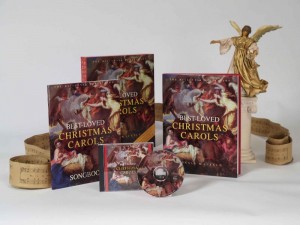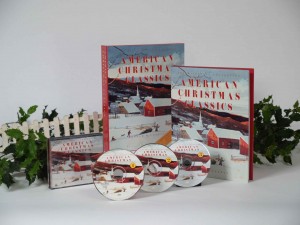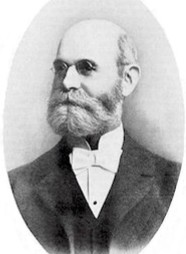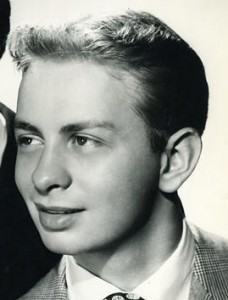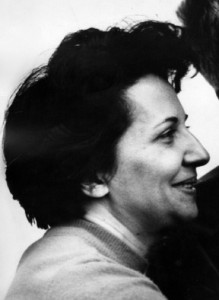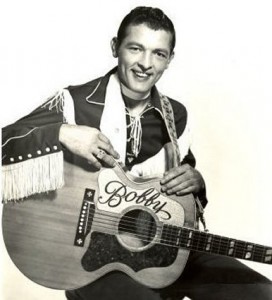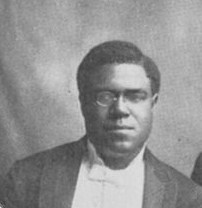Stan Zabka’s Classic Christmas Eve Song
For those unfamiliar with the name, Stan Zabka, think Americana and you’ll hear on this Christmas Eve his appropriately-named holiday classic (and one of my favorite holiday tunes) – Christmas Eve In My Home Town.
Resplendent with home town images and themes, especially as it is performed by the iconic Kate Smith, the carol was written during a very difficult time when American soldiers were engaged in another foreign war. Stan Zabka, along with Don Upton, another ex-GI, wrote Christmas Eve in My Home Town in 1951 at the height of the Korean War. The song became an immediate hit with soldiers in the field and sailors at sea, eventually earning sobriquets as The Soldier’s Christmas Song, and the Official Christmas Song of Radio Free Europe during the Cold War years.
In 1966 during the Vietnam War, Kate Smith wanted to do something special for American troops by recording 36 individual messages on the Armed Forces Network, which then aired them around the world wherever our troops were stationed or on ships at sea. In her folksy and heart-warming voice, she addressed her armed forces audience: “Hello boys and girls, this is Kate Smith coming to you via Armed Forced Radio with a greeting to let you know that we are all thinking of you. I have recorded a song especially for you. It was written by a couple of ex-GIs, Stan Zabka and Don Upton, and you will be hearing it soon. Its title is Christmas Eve in My Home Town. And boys and girls, Christmas won’t be the same without you, but you can bet that you will be thought of, and prayed for, and loved just as much as if you were all here. I would like to say Merry Christmas to you and may God bless you all.”
On another occasion when our troops entered Kuwait in September 1990, the U.S. government forbade Western Christmas music to be broadcast because Kuwait was a Muslim country. However, it was Kate Smith’s special Armed Forces Network message and introduction of the song on the Johnny Carson Tonight Show that convinced the government to lift its restriction. What may have also helped to get the message out was the affable Zabka, a three-time winning composer, musician, and director, once served as an associate director with NBC-NY and for five years had a close working relationship with Johnny Carson and the Tonight Show.
This Christmas Eve if you want to experience the warm glow of the season and the sound of a more innocent time in American history, richly illuminated by the one and only Kate Smith, tune into Zabka’s nostalgic classic: Christmas Eve in My Home Town. His homey lyrics truly capture the spirit of the season and the nostalgic long ago, an essential ingredient of AMERICAN CHRISTMAS CLASSICS.
There’s so much to remember!
No wonder I remember
Christmas Eve in My Home Town.
Carols in the square,
Laughter everywhere,
Couples kissing under the mistletoe.
I can’t help reminiscing,
Knowing I’ll be missing
Christmas Eve in My Home Town.
Nothing can erase
Mem’ries I embrace
Those familiar footprints upon the snow!
There’s so much to remember!
No wonder I remember
Christmas Eve in My Home Town.
I’d like to be there,
Trimming the tree there,
And there’s a chance that I might!
I can hear singing,
Steeple bells ringing
Noel and Silent Night.
Wise men journeyed far
Guided by a star,
But, though I’m not a wise man,
This I know:
Through dreams and just pretending,
I’m there and I’ll be spending
Christmas Eve in My Home Town.
© Big Island Music, Inc.
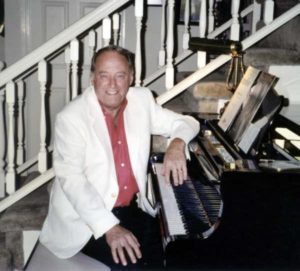
Stan Zabka at the piano
Amazing Christmas Memories for World War II Veterans
What makes for an amazing Christmas present for folks of “The Greatest Generation?”
For these wonderful grandparents, parents, and friends who bequeathed to us the Baby Boomer era, maybe an amazing gift is simply one that brings about a ready smile and a moist gleam in the eye. Maybe it is one that rekindles memories of their Christmas Past and comes wrapped with nostalgic pictures and favorite holiday sounds. (Think Norman Rockwell, N.C. Wyeth, The Smithsonian Museum of American Art, Scribner’s, The Saturday Evening Post, or Nat King Cole, Bing Crosby, Gene Autry and you get the picture.)
Maybe, just maybe, an amazing gift is one that stirs the emotional impulse of elderly veterans to reach out and tightly hug children and grandchildren.
Despite such a tender display, forever etched as a priceless moment in time, it may not mask the betrayal of strength that once allowed World War II veterans to wend their way through the years. With the dwindling of time, moreover, these cherished moments may become more rare, or lamented as lost opportunities, and even more so with the passing of 450 World War II veterans each day.
Today, the 75th Anniversary of Pearl Harbor, presents an opportunity to show your appreciation for our World War II veterans. If you are searching for an amazing Christmas present for your veteran loved ones, look no further. American Christmas Classics, a richly illustrated 2-in-1 Christmas music gift box collection, was dedicated to “The Greatest Generation” which gave so much and asked so little.
With YOUR PURCHASE of the amazing American Christmas Classics, or Best-Loved Christmas Carols, Ron Clancy and Christmas Classics Ltd. WILL MATCH IT BY DONATING our best-selling box sets to World War II veterans and military organizations that support them. Both are available here at www.christmasclassics.com
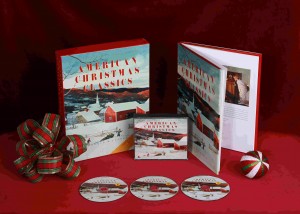
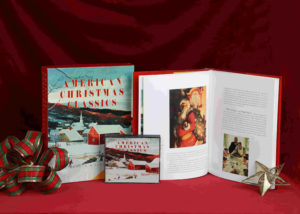
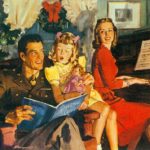
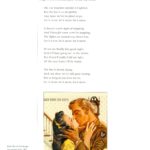
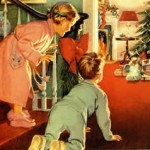
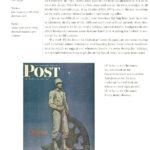
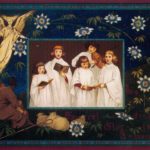
A Special Christmas Music Gift
We all love to get into the Christmas season and set the right mood for love and merry making. This is also the right time to look for special gifts and send them to our loved ones just to let them know how much they mean to us. Just as we are reminded by the timeless hit of the Little Drummer Boy, no gift will ever be ideal for Christmas than the gift of a real Christmas classic. But unfortunately, it is a little bit of a task to locate and find such gifts and send them out during Christmas.
American Christmas Classics – FREE SHIPPING until Christmas using Code CHR2015!
Despite the fact that it is not easy to find the perfect gift to send out during Christmas, there is not a total blockade to prevent you from thinking out of the box. It is still possible to come up with a nice sweet collection of American Christmas classics and wrap them into a gift box that will be much appreciated, especially by those folks from the Baby Boomer era. Fortunately, with a little searching, there are several places where you can find such gift collections. One such place is Christmas Classic Ltd. It produces exquisite Christmas music collections that will make perfect Christmas gifts at any time. To boot, American Christmas Classics is available at $29.95 . . . a 50% Discount from the original price of $59.95!
Included in the American Christmas Classics collection are 47 all-time favorite classic Christmas songs featuring music legends Bing Crosby, Kate Smith, Andy Williams, Gene Autry and other celebrated singers. But the collection is not only about music.
This cultural treasure includes a lavishly illustrated masterpiece book about the stories behind favorite American Christmas carols and songs featuring period fine art and illustrations from America’s great artists, such as Norman Rockwell, Henry Ossawa Tanner, and Grandma Moses, as well as images of nostalgic Victorian Christmas cards and notable magazines of yesteryear as The Saturday Evening Post, Scribner’s, and LIFE.
This Christmas collection has been described as a sumptuous and ideal gift package that will bring boundless joy this season. For customers nostalgic for their Christmas past, this is the perfect Christmas gift.
Act today for FREE SHIPPING using Code CHR2015
Dick Clark and AMERICAN CHRISTMAS CLASSICS
Dick Clark, the late popular radio and television personality, had high praise for AMERICAN CHRISTMAS CLASSICS. An iconic figure who helped to pioneer the rock ‘n roll era with his popular American Bandstand, Mr. Clark was a gentleman of the highest order. I came to appreciate this quality about him after I had approached him in 2002 about promoting my newest Christmas music boxed collection. Mr. Clark was so impressed by this unique collection of American Christmas songs, which he described as “most impressive,” that he considered buying my company, Christmas Classics Ltd. This was especially true after he had learned Christmas Classics Ltd. had gotten the necessary 172 copyright clearances to produce and published the richly illustrated collection. They included 47 Christmas songs and carols lyrics, three CDs, and 91 images including five Norman Rockwell color plates. Eventually Mr. Clark reluctantly decided not to purchase Christmas Classics Ltd. In an e-mail he wrote, “I always felt your material had great promise,” but because of a busy business schedule he would not have the time to devote to the enterprise. Regardless of the fact we could not work together to promote AMERICAN CHRISTMAS CLASSICS, I think of Dick Clark each Christmas season, ever thankful for his praise of my unique American Christmas songs and carols collection. But more importantly I remember him for being a gracious and kind person to me, a newcomer to the music and publishing trade. Over the years his positive assessment of AMERICAN CHRISTMAS CLASSICS has proven to be true, one that has been echoed by newspapers, media, and customers alike.
Not too Late! Great Christmas Gifts for Military Families
It’s not too late! Please RT about Christmas Classics Ltd. support of the Fisher House Foundation this Christmas season. PRESS RELEASE
A great provider of free housing and comfort for military families in need of special medical care, the reputable foundation will benefit from the sale proceeds of Christmas Classics Ltd.’s two highly acclaimed Christmas music box collections, Best-Loved Christmas Carols and American Christmas Classics.
In addition, these premier collections are being donated to thirty-three Fisher Houses located across the country.
With the purchase today of Christmas Classics prized collections, described by customers and media alike as “great gifts,” you will make this Christmas season truly memorable, not only for your family and friends, but also for many of our military families who have suffered so much and yet have asked so little.
Merry Christmas!
Ronald M. Clancy
www.christmasclassics.com
Christmas Classics PERSON OF THE DAY: William J. Kirkpatrick
On this day in 1921, William J. Kirkpatrick died in Philadelphia. The son of a school teacher and musician, he was responsible for writing one of the more familiar arrangements for Away in a Manger.
Born in Duncannon, Pennsylvania, Kirkpatrick went to Philadelphia to learn music and carpentry. His ambition was to be a violinist, which was hampered as he plied his trade as a carpenter. At the age of thirty-four he began to devote more time to sacred music after joining the Wharton Street Methodist Episcopal Church in Philadelphia. As a member of the Harmonia and Handel and Haydn Sacred Music Societies, Kirkpatrick gained more exposure to the principal choral works of great composers. After the death of his first wife in 1878, he finally gave up his trade and dedicated his life solely to sacred music and composition, as well as being involved with the publication of forty plus hymnals.
Kirkpatrick’s tune for Away in a Manger, commonly known as The Cradle Song, is most used in England. The Cradle Song was first written in 1895 for the musical Around the World with Christmas. In the United States the tune most heard for Away in a Manger is associated with James Ramsey Murray (see my March 11, 2011 blog).
The anonymous lyrics for Away in a Manger likely were written by a member of the German Lutheran colony in Pennsylvania during the late 19th century. The words for the first two stanzas may have first appeared in 1885 in the Little Children’s Book for Schools and Families, a publication of the Evangelical Lutheran Church in North America. It is possible, however, that they first appeared in the May 1884 edition of The Myrtle, a Universalist Publishing House Boston publication, as Luther’s Cradle Hymn to commemorate the 400th anniversary of the birth of Martin Luther, the great German religious reformer. By the 1940s it was proven conclusively that the original lullaby tune had actually been composed by James Ramsey Murray, supposedly the same person who perpetrated the myth of Luther’s Cradle Hymn. Murray’s lullaby was included in an 1887 Cincinnati collection called Dainty Songs for Lads and Lasses.
Although many modern hymnals attribute the lyrics of the third stanza to John T. McFarland, a member of the American Lutheran Board of Sunday Schools, it is believed he had merely made reference to it. Instead, the third stanza, which first appeared in an 1892 Louisville, Kentucky, Lutheran Church collection titled Gabriel’s Vineyard Songs, was probably the contribution of another anonymous author. This lyrical addition strengthens the inherent tenderness of this renowned American carol hymn.
Three years later Kirkpatrick wrote the tune The Cradle Song for the musical Around the World with Christmas. Again, it is that tune that serves as Kirkpatrick’s arrangement for Away in a Manger.
Pennsylvania Germans and Moravians, besides being credited as the source for the anonymous lyrics of Away in a Manger, were unique in other aspects of Christmas. They celebrated the humble beginnings of the Christ Child by employing a Christmas decoration called a putz (from the German word “putzen” meaning “to adorn”), for the manger scene. The Moravians, furthermore, may even have played Away in a Manger in their trombone choirs that were known to perform from church belfries in Bethlehem, Nazareth, and other Pennsylvania towns with Moravian congregations.
Bethlehem, the site of the first Moravian church built in eastern Pennsylvania, was so named on Christmas Eve in 1742 when construction of the church was completed. That special night settlers sang in one room of the new structure while cows mooed in the other half, which served as a stable. The scene so moved the congregation, reminding them of events surrounding the birth of the Christ Child in another small town eighteen hundred years earlier, that they christened their settlement Bethlehem.
Christmas Classics PERSON OF THE DAY: Mel Tormé
On this day in 1925, Melvin Howard Torma, better known as Mel Tormé, was born in Chicago to a Russian Jewish family. He was an accomplished and well-liked jazz composer, scat singer, author, and actor for television and movies. In Christmas music circles he is best known as co-author, along with Robert Wells, of The Christmas Song (a.k.a. Chestnuts Roasting on an Open Fire).
During the World War II years Tormé moved to California, enlisted in the Army, and started his own quintet Mel Tormé & the Mel-Tones. B y 1947 he decided to strike out on his own and then went on to develop a reputation as a cool jazz singer. He did not disappoint in 1948 with Careless Arms, a number one hit. In all “The Velvet Fog” a sobriquet Tormé detested, is credited with 250 songs and the arranger for a host of songs he sang for several recording companies, including Decca and Capitol Records. For a time in the 1960s he was the principal song writer and music arranger for The Judy Garland Show and by the 1970s with the resurgence of jazz singing his career was revitalized and from that time forward he remained a presence in the jazz world until his death.
How Tormé became associated with one of the most popular Christmas songs for the past seven decades is one for the books. During a terrific heat wave besieging Los Angeles in July of 1945, the songwriter Robert Wells sat at his piano and tried to find solace from the heat by jotting down several lines of lyrics with wintry themes. “It was so damn hot, I thought I’d write something to cool myself off,” he once said. “All I could think of was Christmas and cold weather.” While in this mood, his good friend Mel Tormé paid a visit. When Tormé noticed the notes Wells had put to paper, he suggested to him that they just might have the beginnings of a Christmas song.
Within twenty or forty-five minutes, depending upon who’s telling the story, the two songsters produced The Christmas Song. Tormé then went to the home of Nat King Cole and convinced him to record the song, and in the Spring of 1946 Nat went into a New York recording studio with a simple piano version of the song. The initial results weren’t satisfactory, and at the urging of his wife Maria and manager, the mellifluous singer responded with a more highly regarded version with strings and full orchestra. It was Cole’s exquisite recording that popularized the song, and over the years The Christmas Song has consistently ranked as one of America’s seasonal favorites.
Considered an historic recording, the song was honored in 1999, as was Tormé himself for life time achievement, by being inducted by the Grammy Awards organization into its Hall of Fame.
The Christmas Song has truly stood the test of time. This is quite understandable because it was written during an age when composers like Tormé produced music marked by grace and charm. In retrospect it is easily understood why his passing was mourned by many, especially by those nostalgic for such memorable musings from “Chestnuts roasting on an open fire” . . . to . . . “And so I’m offering this simple phrase, To kids from one to ninety-two; Although it’s been said many times, many ways, “Merry Christmas to you.”
Christmas Classics PERSON OF THE DAY: Gloria Shayne
On this day ninety years ago, Gloria Adele Shain was born of a Jewish family in Brookline, Massachusetts. She changed her name to Gloria Shayne early in her professional career as a pianist and composer. In the 1940s she moved to New York,and it was there where she made her mark.
In the world of Christmas music she is famed for composing Do You Hear What I Hear? in collaboration with her husband Noel Regney, a Frenchman.
The Shayne and Regney union was a story of romance. They met in the early 1950’s when the Frenchman came to the Beverly Hotel in New York, now known as the Benjamin Hotel, where Shayne was playing the piano. Both were duly smitten on their chance meeting and a month later the two lovers were married.
Do You Hear What I Hear?, although often taken for a Christmas carol, was actually composed by the husband and wife team as a hymn of peace, one borne out of a sense of desperation and fear of war because of the looming Cuban Missile Crisis. Both composers had not forgotten about the horrors of war. During the World War II years Shayne worked for the Jewish Welfare organization at a time when millions of Jews were being slaughtered by the Nazis. Regney, trained as a classical composer, witnessed its terror first hand when he was conscripted by the German Army, even though he was a Frenchman, but soon deserted it to join the French Resistance.
Shayne and Regney were especially fond of the phrase “Pray for peace, people everywhere!” in the carol’s last stanza because it emphasized the rationale for the song. Somehow their hymn of peace became part of the Christmas carol repertoire, perhaps because of Regney’s lyrical imagery of lamb, shepherd boy, and the Child Jesus sleeping that could easily be associated with the Nativity scene.
Shayne and Regney collaborated on a number of famous songs, including Rain, Rain Go Away first performed by Bobby Vinton and Sweet Little Darlin’ first performed by Jo Stafford. But she also enjoyed success on her own, including writing the music and lyrics for Goodbye, Cruel World, recorded by James Darren, and co-writing The Men in My Little Girls’ Life, performed by Mike Douglas, and Almost There that was first sung by Andy Williams.
Gloria Shayne divorced Noel Regney in 1973. She remarried, and in 2008 she died at home in Stamford, Connecticut of lung cancer. She will be most remembered here for her contributions to Do You Hear What I Hear?, a song of peace that eventually spawned a lovely Christmas carol.
Christmas Classics PERSON OF THE DAY: Bobby Helms
On this day in 1933, Robert Lee Helms was born in Bloomington, Indiana. Better known as Bobby Helms, he was a country singer and the original recording artist of Jingle-Bell Rock, the first Christmas holiday song noted for its rock n’ roll flavor. It was released by Decca Records on December 23, 1957, a hundred years after the copyright of Jingle Bells, which may not have been totally coincidental. The song rapidly rose to #6 on the Pop Charts and has since been reprised every Christmas season.
Bobby Helms rise to stardom actually began earlier that year with the release of Fraulein, a country song, which to the surprise of country aficionados, fared well on the pop charts, and later in 1957 with My Special Angel, Helms’ biggest hit that sold over a million records.
Jingle-Bell Rock, however, was the brainchild of an very unlikely pair of the songwriters: Joseph Carleton Beal, a public relations man and author, and Texas-born James R. Boothe whose career was largely devoted to advertising. Jingle-Bell Rock was their sole claim to fame in the world of Christmas music.
Although Bobby Helms continued a productive career in country music that included touring with his Bobby Helms Show and promoting a yearly musical festival in his native Indiana, not to mention he owned three night clubs, he never again achieved the soaring heights when Jingle-Bell Rock topped off what was a very, very good year.
Christmas Classics PERSON OF THE DAY: John Wesley Work, Jr.
Also on this day in 1871, John Wesley Work, Jr. was born in Nashville, Tennessee. Considered one of the first, if not the first, serious black collector of Negro folk songs, he too studied Latin and Greek, as well as history, and taught the two classic languages after he received a Master’s degree from Fisk University in 1898.
For the next twenty-five years Work Jr. became a leader in the effort to study and preserve Negro spirituals. At the same time he organized Fisk singing groups, and with the help of his wife Agnes and his brother Frederick Jerome Work, collected and published a number of collections of slave songs and spirituals. The first of these collections was New Jubilee Songs as Sung by the Fisk Jubilee Singers (1901).
Six years later he published, and may have composed, the remarkable spiritual Go Tell It on the Mountain, as part of New Jubilee Songs and Folk Songs of the American Negro.
Many of the spirituals the Works collected had originally been sung by their forebears as they toiled in the fields, or at difficult manual labor, during the dark age of slavery. It was one way of establishing relationships and feeling that God was near. The story of Christmas, of God’s Son being born as man to redeem and free man of his sins, was important in itself and as a symbol of hope in their quest for freedom
The legacy of Negro spirituals was important to Work Jr. as he became both the leader and performer of the Fisk University Jubilee Singers, the historic choral group founded in 1871 for the purpose of raising funds for the post-Civil War black college whose severe financial problems almost shut the school down. The Jubilee Singers, who took their name from the year of freedom in the Bible, were quite successful on their tours of the United States and Europe, which included a bravo performance for Queen Victoria of England, and in the process they raised the Negro spiritual to an art form.
For eighteen years Work Jr. served as leader of the Jubilee Singers until negative opinion set in at Fisk against the Negro spiritual as only a painful reminder of slavery. This groundswell of negative feelings toward black folk music forced Work Jr. to resign his leadership post in 1923. For the balance of his life, he served as president of Roger Williams University until his death on September 7, 1925.


